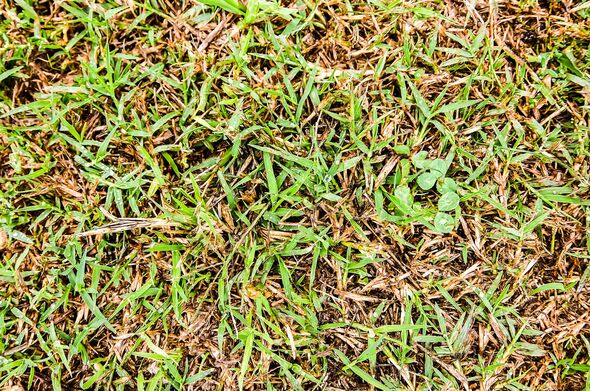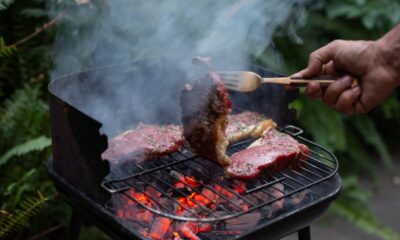Lifestyle
Gardeners Alerted: Combat ‘Rusty Lawn’ Disease This Week

Gardeners across the UK are being warned to take immediate action against a condition known as ‘rust disease’ that can significantly weaken grass during late summer and autumn. This week’s drought conditions have heightened the risk, making it imperative for homeowners to be vigilant.
‘Rust disease’ is caused by various fungi, primarily species from the genera Puccinia and Uromyces. The disease manifests as an orange discolouration of the grass, which can stain clothing and footwear when walked upon. According to the Royal Horticultural Society (RHS), infected areas can produce vast numbers of airborne spores, contributing to the spread of this common foliar disease.
Understanding Rust Disease and Its Impact
The RHS describes rust disease as prevalent between May and November, with peak incidences occurring during the late summer and early autumn months of August and September. The society notes that heavily infected leaves may turn brown and shrivel, although the disease typically does not kill the grass outright.
Moorlands Lawn Care supports this observation, indicating that rust can occur outside the typical season if conditions become overly warm and damp. The current weather patterns have led to a hosepipe ban in several areas of the UK, exacerbating the problem as drought conditions can stress grass and make it more vulnerable to infection.
Preventive Measures and Recommendations
Unfortunately, there are no legal chemical treatments available for rust disease in the UK. The most effective preventative measures involve maintaining lawn health. The RHS advises against letting grass grow too long, as taller blades are more susceptible to rust. Regular mowing and pruning of overhanging trees can improve air circulation, further reducing the likelihood of fungal growth.
Stress factors contributing to rust disease include nutrient deficiencies, moisture shortages, and shaded environments. The RHS suggests that feeding grass regularly during the growing season can help mitigate these stresses. Additionally, fertilisers high in nitrogen should be avoided, as they can promote lush growth that is more prone to rust.
In summary, gardeners are encouraged to monitor their lawns closely and adopt these proactive measures during this critical period. By doing so, they can help ensure their grass remains healthy and vibrant, avoiding the unsightly and damaging effects of rust disease.
-

 Entertainment3 months ago
Entertainment3 months agoAnn Ming Reflects on ITV’s ‘I Fought the Law’ Drama
-

 Entertainment4 months ago
Entertainment4 months agoKate Garraway Sells £2 Million Home Amid Financial Struggles
-

 Health3 months ago
Health3 months agoKatie Price Faces New Health Concerns After Cancer Symptoms Resurface
-

 Entertainment3 months ago
Entertainment3 months agoCoronation Street’s Carl Webster Faces Trouble with New Affairs
-

 Entertainment3 months ago
Entertainment3 months agoWhere is Tinder Swindler Simon Leviev? Latest Updates Revealed
-

 Entertainment4 months ago
Entertainment4 months agoMarkiplier Addresses AI Controversy During Livestream Response
-

 World2 weeks ago
World2 weeks agoBailey Announces Heartbreaking Split from Rebecca After Reunion
-

 Science1 month ago
Science1 month agoBrian Cox Addresses Claims of Alien Probe in 3I/ATLAS Discovery
-

 Health4 months ago
Health4 months agoCarol Vorderman Reflects on Health Scare and Family Support
-

 Entertainment4 months ago
Entertainment4 months agoKim Cattrall Posts Cryptic Message After HBO’s Sequel Cancellation
-

 Entertainment2 weeks ago
Entertainment2 weeks agoCoronation Street Fans React as Todd Faces Heartbreaking Choice
-

 Entertainment3 months ago
Entertainment3 months agoOlivia Attwood Opens Up About Fallout with Former Best Friend





















